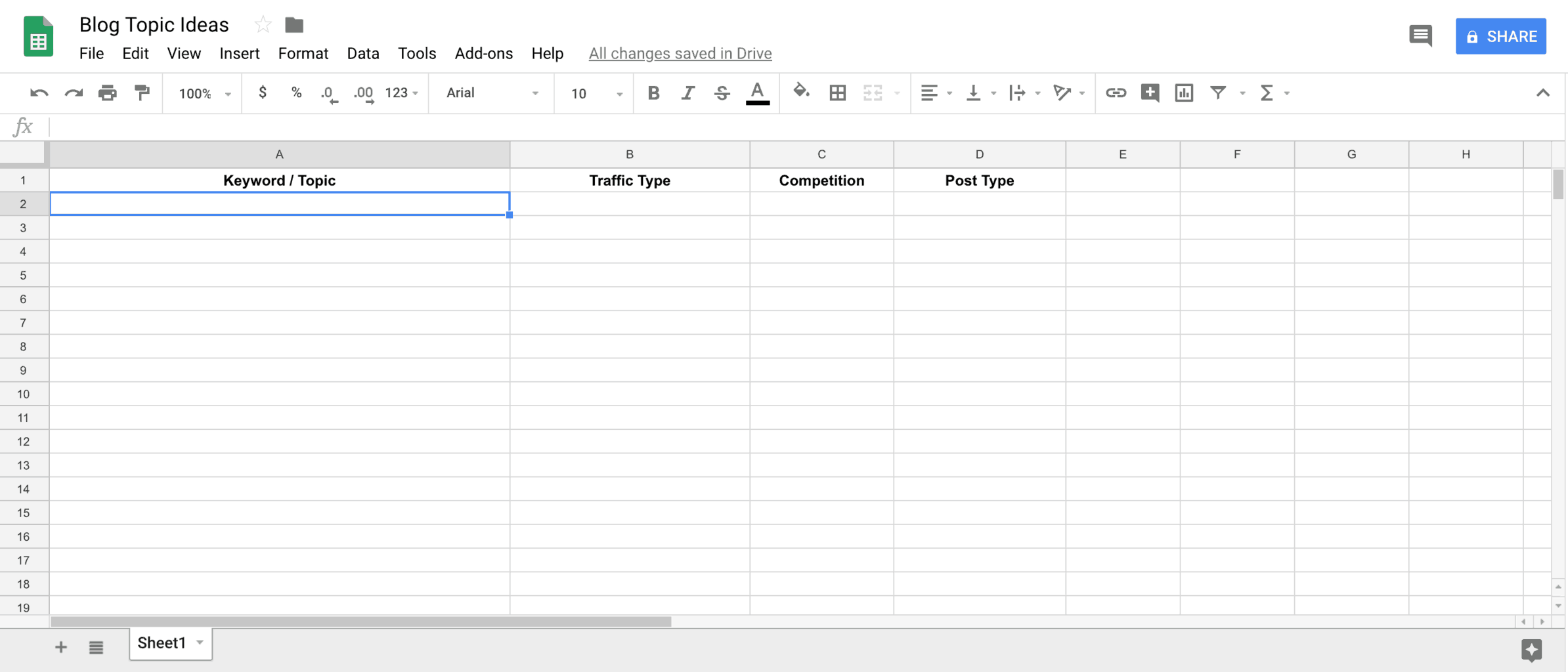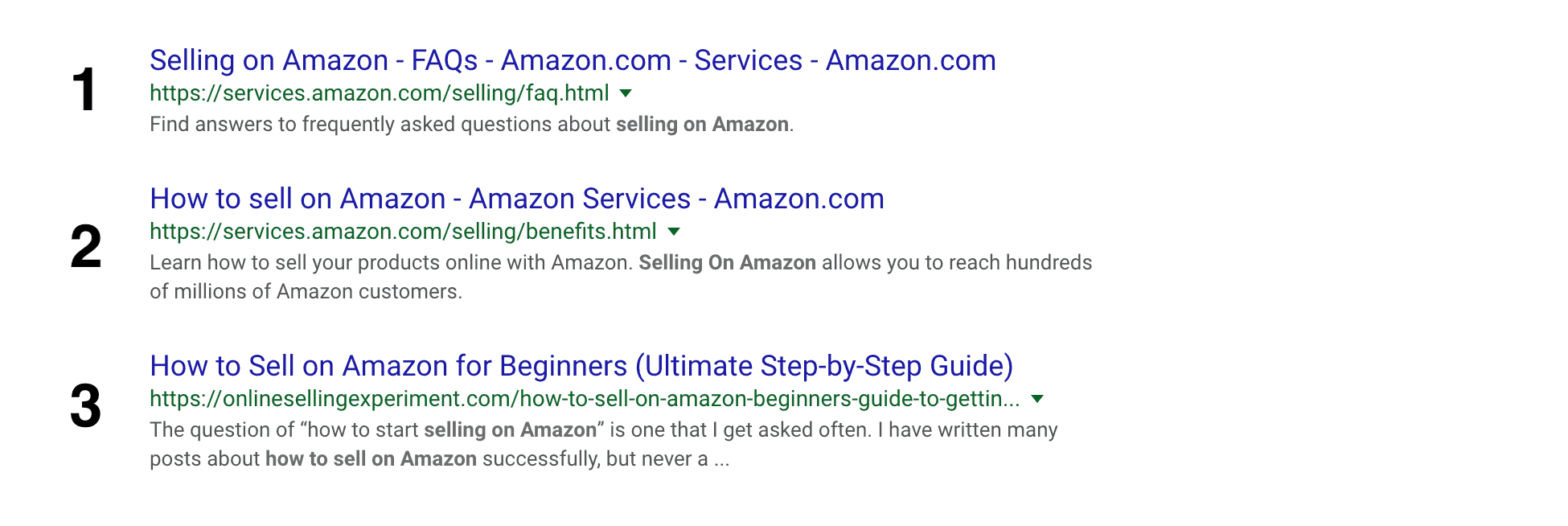Once you build your niche website, the next step is to start filling it with content.
You’ll be tempted to think about content in terms of what can generate affiliate revenue. In the beginning, your focus needs to be entirely on providing value to your readers. You shouldn’t plan on monetizing your content until you have reliable traffic and subscribers.
In this post, we’ll cover what you need to know to create excellent content that will drive traffic to your site.
Choosing Topics People Want To Read About
Bad topic selection is one of the main reasons people fail early on with their blogs. If you don’t write about the things people want to read about, no one is going to come to your site – no matter how much you write.
There are a lot of tools out there that are designed to help with this. The most common are keyword research tools. For the most part, I would avoid almost all of them!
Keyword research tools are supposed to tell you exactly how many people are searching for a given term, but in my experience, they are extremely inaccurate.
You don’t need to spend any money to choose good topics – the best tools and methods available are completely free.
Here are the steps I would recommend taking to come up with good ideas.
Step 1: Start a spreadsheet called Topic Ideas.
We’re going to use a spreadsheet to keep track of your topic ideas that are potentially worth pursuing.
Once you start your spreadsheet, give the first four columns the following titles:
- Keyword / Topic
- Traffic type
- Competition
- Post type

Step 2: Add at least 50 keyword and topic ideas.
If you completed the content brainstorming exercise we talked about in the first chapter of this affiliate marketing series, you may already have 50 or more good topic ideas.
You shouldn’t stop just because you reach 50 though – the more good ideas you have, the better.
There are only two tools you’ll need for verifying ideas: Google search and common sense.
One thing that I wish I understood when I started this blog is that a topic doesn’t have to have ranking potential with search engines to be worth writing about, and that is where common sense comes into play.
There are three main ways that people discover content:
- Searching
- Sharing
- Stumbling
Sometimes a topic will work well for all three discovery methods. Other times, an idea will only work well with one or two.
Before you discard an idea that may not rank in search, it’s important to consider whether people would be likely to share it or if it’s the type of idea people would like to read about after reading one of your other posts first (what I consider stumbling).
With that being said, ideas that have strong ranking potential tend to have an increased value early on because getting search traffic is often the catalyst needed to get people sharing your content in the first place.
To find ideas with strong ranking potential, I recommend using the keywords, phrases, and questions that Google suggests after you search for something.
I do this instead of using keyword research tools because Google suggests these questions and phrases based on the things people are actually searching on Google – there is no doubting whether there is traffic with this method.
You’ll need a handful of your own ideas to get started with this. As you type them into Google, pay attention to the phrases that are suggested as you type. Add any of these to your list that seem like relevant topics for your blog.
Once you actually search for something, there are two additional places to find great keywords and phrases on the results page.
The first is the “People also ask…” section that is normally towards the top of the page.

The other place to look is the “Searches related to…” section that is at the very bottom of the search results.
Add any of these that seem like good ideas to your list, and then click or search for them to find even more ideas. Keep repeating this until you’ve exhausted all the results and ideas you have.
When you add an idea to your list, fill out the second column on the traffic type (search, share, stumble) as well. You can do this as you add each one individually or once your list is complete. An idea can be good for more than one traffic type.
Step 3: Check the competition.
Once you have a list of ideas, you’ll want to go through and check to see how strong the content that currently ranks for each topic is. As you do this, indicate the strength of the competition on a scale from 1 to 5 in column three on your spreadsheet.
A ‘1’ would indicate that there is almost no competition at all – the only results that show up are forum posts, dated websites, or posts that don’t really address the topic.
A ‘5’ indicates that the competition is incredibly strong – the first page is full of on-topic posts from websites with a large degree of authority.

Step 4: Decide what ‘type’ of post you need for the topic.
Once you have a good list of topics and a grasp on how strong the competition is, you’re going to go back through and categorize them based on how much detail will be required for a post to perform well.
To keep things easy, we’ll use three main categories:
- Simple
- Detailed
- Pillar
A simple post is one that is answering a very direct question and doesn’t require a lot of detail. These posts can be on the shorter side – somewhere between 1,000 and 1,500 words. The person searching the phrase should be looking for a relatively quick answer to a question they have.
A detailed post is one that requires more length to adequately address the topic, roughly 1,500 to 3,000 words.
A pillar post is one that addresses something fundamental to the site and are usually 3,000+ words. When creating a pillar post, your goal should be to create the best resource on the particular topic possible. Creating something like this can be a good way to rank for highly competitive keywords.
For example, my guide on getting started selling on Amazon is a pillar post for this site. It addresses one of the core things people come here to learn about (starting on Amazon) and is over 4,000 words.
When trying to gauge what type of post to create for a topic, keep two things in mind: what a reader would expect or value and how much competition there is.
For this step, go through and put an S, D, or P in the final column of the spreadsheet based on what type of post you think the keyword needs. If you think that a keyword should be used within another post rather than in one of its own, put an N for nested.
Creating the content…
Once you have your list of topic ideas, you have to go and actually write the articles.
Start with 10 simple posts and focus on low-competition topics that have the potential to drive search traffic. Once you have 10 simple posts published, write 3 posts covering the most important topics in your detailed category. When you finish the 3 detailed posts, write your first pillar post.
Doing it in this order will help you get content up faster, and it will also help you avoid burning out by starting with a large post that you aren’t ready to write.
Set a time limit…
A good tip that I learned is to set a time limit for your writing. If you aren’t experienced with writing articles, it can be very easy to sink hours and hours into a project long after it was ready to be published as you try to make it “perfect” – but this extra time rarely translates to extra value for the reader.
A ‘simple’ post should only take a couple hours to create, and you may be able to write them in as little as one hour once you gain more experience writing articles. ‘Detailed’ posts will typically take between two and four hours to create. Pillar posts are the most important on your site, and these will also take the most time. Expect to work on a pillar post for 6+ hours over a few days.
These are guidelines, not rules. Some posts will take longer to create – if that extra time is translating to more value being delivered in the post, then the time is worth it.
Aim to get these initial posts up as quickly as possible. You don’t have any readers yet, so you don’t need to worry about overwhelming them with more content than they can read. The faster you get them up, the earlier they can start ranking in search engines. For a brand new site, getting something to rank even when there isn’t a lot of competition will often take months.
A Note On SEO…
SEO is a lot simpler than most people think. There’s no need to try to over-engineer a post to rank better on Google. In fact, this is a good way to get penalized these days.
In the early days of the internet, stuffing an article full of the same keywords was a good way to rank quickly. That’s not the case anymore.
Good SEO primarily boils down to having a well-coded site (in our case, a good theme), optimized images, and articles that are legitimately helpful to visitors who search for a particular phrase.
Here are the only things I would think about when writing a post:
- Am I providing value to the reader?
- Is the main keyword or phrase in the title?
- Is the title compelling enough to get people to click?
- Is the opening section attention getting? Will people want to keep reading?
- Have I used the keyword a few times in the article?
- Have I used related keywords and phrases in the article?
Google is very good at determining what an article is about, and it is also good at identifying articles that provide more detail based on what related keywords are used. They’re also good at knowing when someone is trying to manipulate the search rankings.
If a human reading your article can clearly tell what the subject is, so can Google. If a human would notice that you used a keyword in an unnatural way to squeeze it into the post one more time, so will Google.
That’s why your time is much better spent trying to make your post better for the people who will actually be visiting from the search engines. Google is constantly testing the positioning of search results to see what searchers like the best.
Two of the main things they look at are:
- Which entry did people click on in the search results?
- How long did they stay on the page after they clicked?
That’s why having great titles and attention-getting opening sections are so important. If no one clicks to your article or they click to your article but bounce back to Google right away, your post will never rank well.
Create a schedule for when you post
Once you get your first round of posts published, I highly recommend creating a posting schedule. Speaking from experience, it is very easy to go weeks or even months without hitting publish on a post, and these gaps in posting are bad for traffic and the ranking potential of your site.
I have not been good about this in the past, and it is something that I am working on improving. The number one thing I will be doing differently is implementing a schedule and making myself stick to it.
A good minimum posting frequency would be once a week. If you have more time, then aiming to get 2-3 published each week would be even better. Publishing more often will help your site grow faster, but you also don’t want to set unrealistic expectations.
My plan is to schedule the days I’ll publish specific posts at least 2 weeks in advance. You can try doing this or something else. All that matters is that you actually follow through with publishing content on your site.
Getting People To Read Your Content
In the next post in this affiliate marketing series, we’ll discuss how to get traffic to your posts – including what you can do to get your posts to rank beyond just waiting for Google to index your content.
Sticking with the theme of scheduling, expect that post out on 10/26.
In the meantime, here are links to the other posts in this affiliate marketing series:
Build a Niche Site For As Little As $35
Comment below with any questions or ideas you have!






Still relevant in 2021! I appreciate the thoroughness and that you break it down into a system, i.e. simple posts, pillar posts, etc with time estimates. Thanks for these great resources!
Glad you found it helpful Ted!
Ryan, Thanks for sharing the insightful article on how to write articles people want to read… I’ve been searching for this strategy for a long time and your article just fulfilled my desire.
Thanks John!
I enjoyed this. I’m starting my spreadsheet tomorrow! Thanks man.
Glad to hear you enjoyed it Jesse, and great to hear you’re going to take action right away!
Best Regards,
Ryan